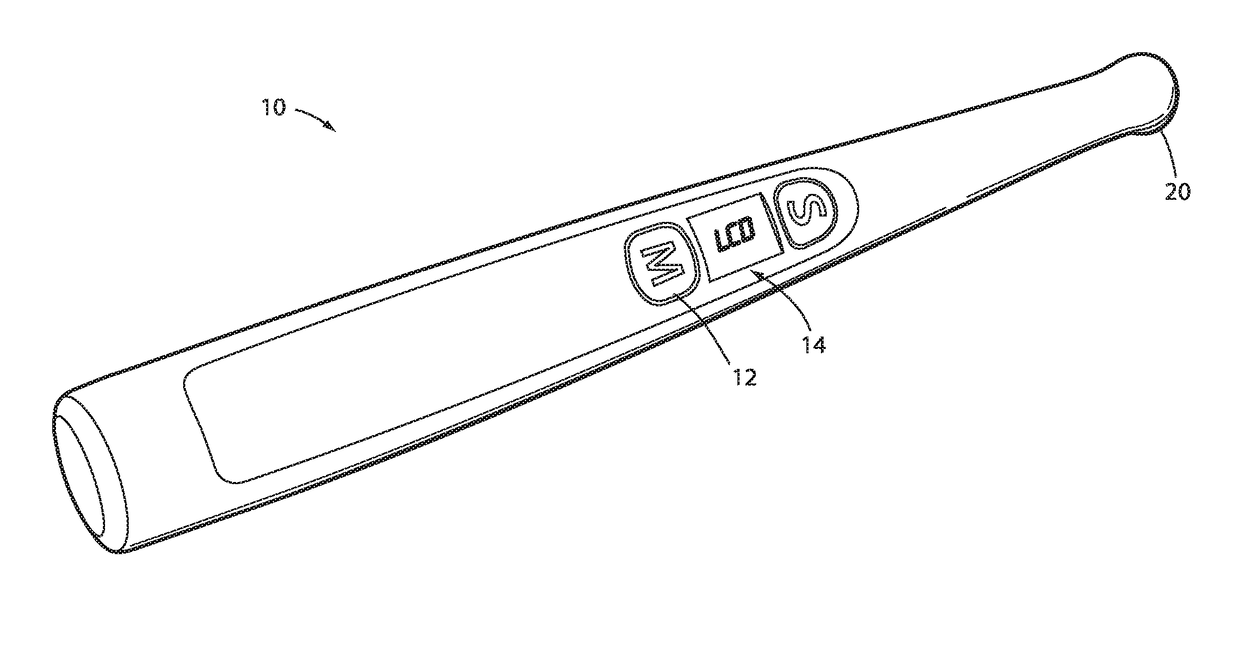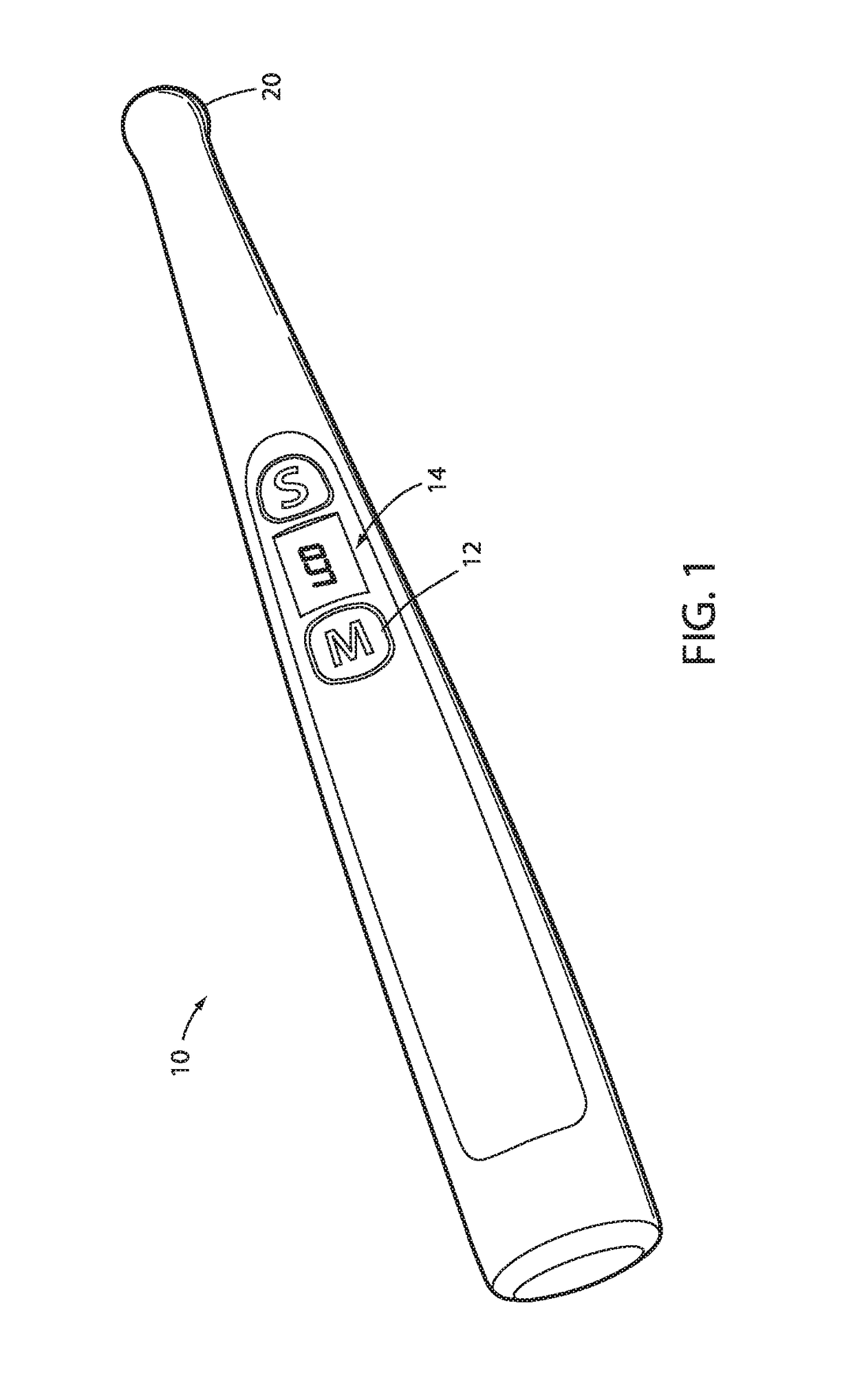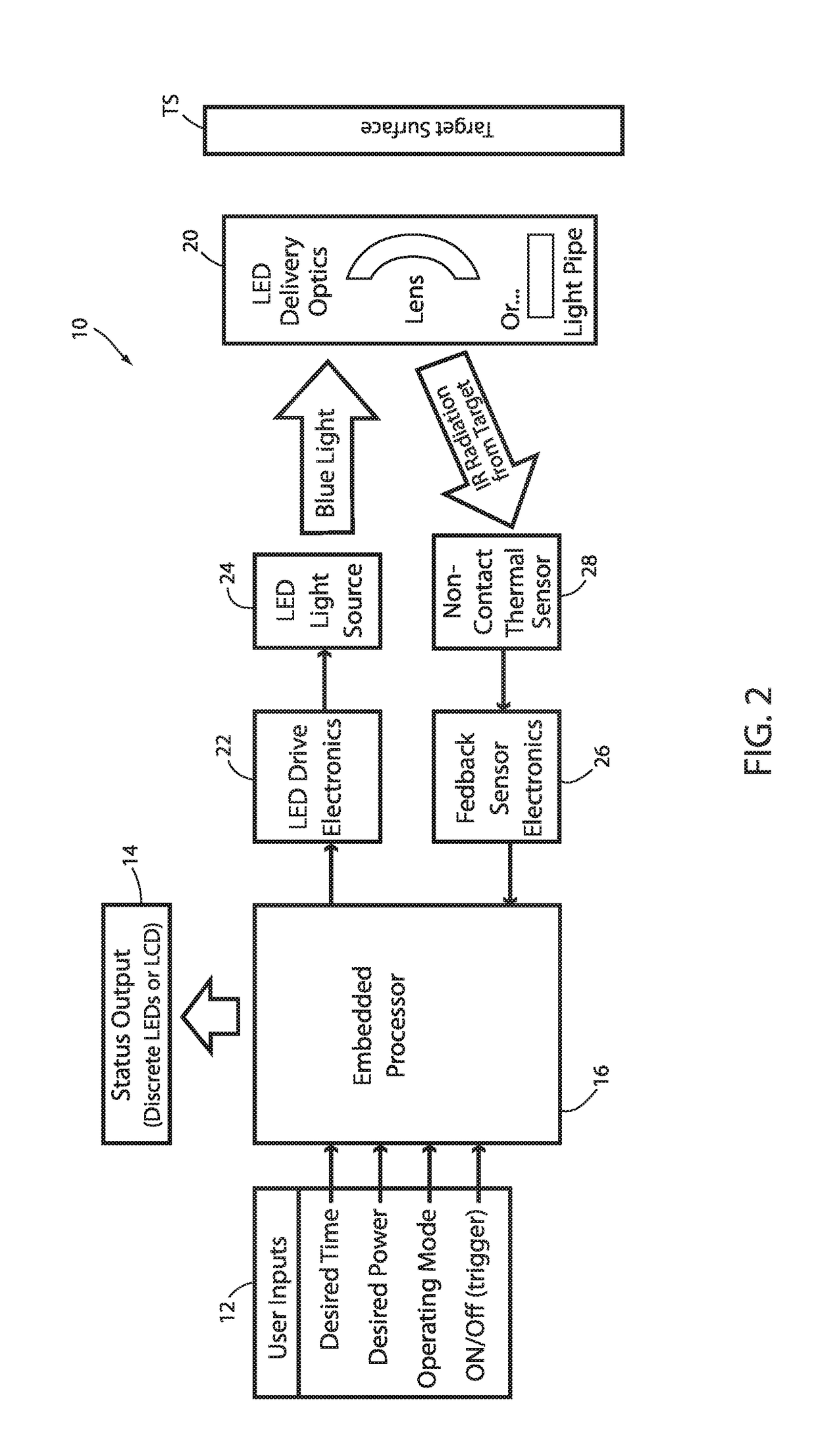Dental curing light
a technology of curing lights and teeth, applied in the field of dental curing lights, can solve the problems of affecting the vitality of tooth pulp, increasing the risk of over curing, and increasing the risk of tooth damage, so as to reduce the chance of over curing, eliminate the possibility of adverse effects, and eliminate the effect of wasted tim
- Summary
- Abstract
- Description
- Claims
- Application Information
AI Technical Summary
Benefits of technology
Problems solved by technology
Method used
Image
Examples
Embodiment Construction
[0026]Referring to FIG. 1, the numeral 10 generally depicts a curing instrument for providing light to a composite material during a cure. Curing instrument 10 may be used to cure a light activated composite material, such as by polymerizing monomers into durable polymers. Curing instrument 10 may be a standalone device, such as a portable handheld wand having a battery power source and controls, or a component of a curing system having a base unit to which the curing instrument 10 is tethered and receives power therefrom and optionally control signals therefrom. A variety of fields may benefit from the curing instrument 10, including, for example, the dental and medical fields. For purposes of disclosure, curing instrument 10 is described as being a dental curing instrument for use in connection with curing a composite material having photo initiator, which absorbs light of a particular wavelength and causes polymerization of the monomers included in the composite material into pol...
PUM
 Login to View More
Login to View More Abstract
Description
Claims
Application Information
 Login to View More
Login to View More - R&D
- Intellectual Property
- Life Sciences
- Materials
- Tech Scout
- Unparalleled Data Quality
- Higher Quality Content
- 60% Fewer Hallucinations
Browse by: Latest US Patents, China's latest patents, Technical Efficacy Thesaurus, Application Domain, Technology Topic, Popular Technical Reports.
© 2025 PatSnap. All rights reserved.Legal|Privacy policy|Modern Slavery Act Transparency Statement|Sitemap|About US| Contact US: help@patsnap.com



